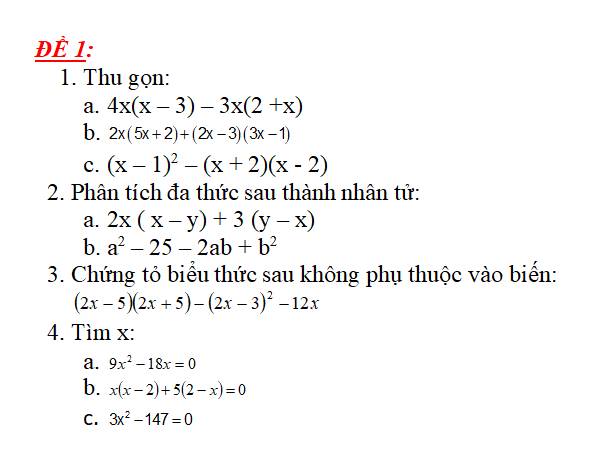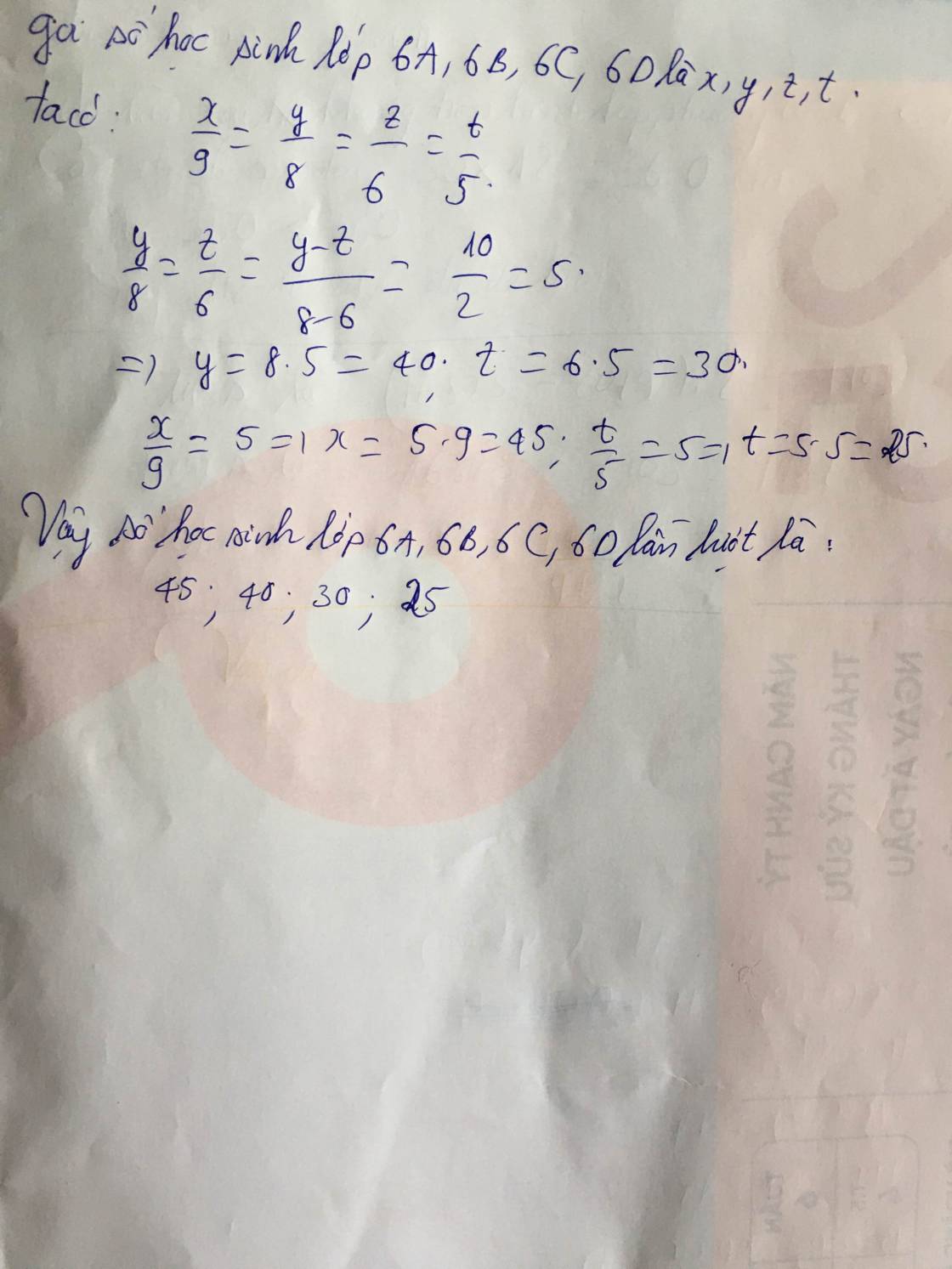Bài 16. Với hai số nguyên a và b. Chứng minh rằng ab(a^2−b^2)(a^2+b^2) chia hết cho 30.
Hãy nhập câu hỏi của bạn vào đây, nếu là tài khoản VIP, bạn sẽ được ưu tiên trả lời.


=> lt's time for students to pay more attention to what teachers say.

1. We spent half a year _____ this hotel.
A. to build
B. built
C. with building
D. building
2. She is bored _____ getting up early.
A. with
B. in
C. of
D. to
3. Would you like me to get you something to drink? - _____
A. That would be nice
B. No, I’m sorry
C. That’s too bad
D. My pleasure

\(\left(x+3\right).\left(x^2-3x+5\right)=x^2+3x\)
\(\Leftrightarrow\left(x+3\right).\left(x^2-3x+5\right)-x.\left(x+3\right)=0\)
\(\Leftrightarrow\left(x+3\right).\left(x^2-4x+5\right)=0\)
\(\Leftrightarrow\left[{}\begin{matrix}x+3=0\\x^2-4x+5=0\end{matrix}\right.\Leftrightarrow\left[{}\begin{matrix}x=-3\\x^2-4x+5=0\end{matrix}\right.\)
+)\(x^2-4x+5=\left(x-2\right)^2+1>0\) nên loại
phương trình 2 dễ nên bạn làm tương tự nhé


cứ theo đề của bạn nhé:
\(x+y=3\Leftrightarrow x=3-y\)
\(M=2x^2-y^2-2x-2y\)
\(=2x^2-\left(3-x\right)^2-2.\left(x+y\right)\)
\(=2x^2-x^2+6x-9-2.3\)
\(=\left(x+3\right)^2-24\)
mà \(x\ge4\Rightarrow\left(x+3\right)^2\ge49\)
\(\Rightarrow M\ge49-24=25\)
\(DBXR\Leftrightarrow\left\{{}\begin{matrix}x=4\\y=-1\end{matrix}\right.\)

Gọi số học sinh 6A,6B,6C,6D lần lượt lượt là: x,y,z,k (x,y,z,k\(\in\) N*)
Theo bài ra ta có:
Số học sinh 6A,6B,6C,6D tỉ lệ với 9;8;6;5
=> \(\dfrac{x}{9}=\dfrac{y}{8}=\dfrac{z}{6}=\dfrac{k}{5}\)
Và y-z = 10
Áp dụng tính chất dãy tỉ số bằng nhau,ta có :
\(\dfrac{x}{9}=\dfrac{y}{8}=\dfrac{z}{6}=\dfrac{k}{5}=\dfrac{y-z}{8-6}=\dfrac{10}{2}=5\)
=> \(\left\{{}\begin{matrix}x=5\cdot9\\y=5\cdot8\\z=5\cdot6\\k=5\cdot5\end{matrix}\right.\Leftrightarrow\left\{{}\begin{matrix}x=45\\y=40\\z=30\\k=25\end{matrix}\right.\)
Vậy số học sinh 6A ,6N,6C,6D lần lượt là 45,40,30,25 học sinh


\(M=ab.\left(a^2-b^2\right).\left(a^2+b^2\right)\)
cần CM biểu thức trên chia hết cho đổng thời cả 2;3;5
đầu tiên là CM chia hết cho 2 nhé
nếu a,b khác tính chẵn lẻ thì dễ rồi nhé
nếu chúng cùng tính chẵn lẻ thì \(a^2-b^2\) chia hết cho 2
vì vậy nên M chia hết cho 2
+) CM chia hết cho 3
nếu mà a hoặc b hay cả 2 cái đều chia hết cho 3 thì dễ nhé vì M có tích ab
nếu mà cả a và b ko chia hết cho 3
\(\Rightarrow\left\{{}\begin{matrix}a^2\equiv1\left(mod3\right)\\b^2\equiv1\left(mod3\right)\end{matrix}\right.\)
\(\Rightarrow a^2-b^2⋮3\)
\(\Rightarrow M⋮3\forall a,b\in Z\)
+)CM chia hết cho 5
nếu a.b chia hết cho 5 thì rất dễ rồi nhé
nếu a,b ko chia hết cho 5 thì:
\(a^2\equiv\pm1\left(mod5\right)\)
\(b^2\equiv\pm1\left(mod5\right)\)
nếu mà \(a^2\equiv b^2\left(mod5\right)\) thì \(a^2-b^2⋮5\)
nế mà chúng khác số dư tức là 1 cái dư 1,một cái dư -1 thì \(a^2+b^2⋮5\) nhé
\(\Rightarrow M⋮5\forall a,b\in Z\)
mà \(\left(2;3;5\right)=1\)
\(\Rightarrow M⋮2.3.5=30\)(đpcm)